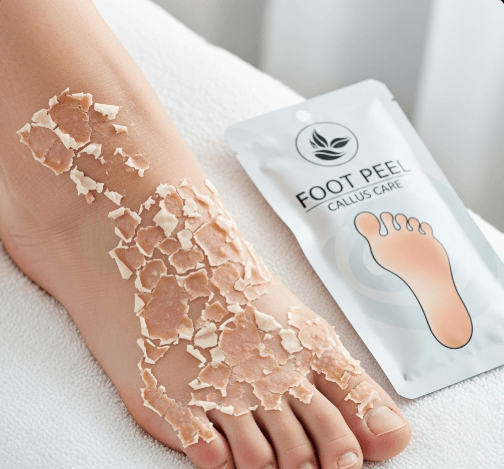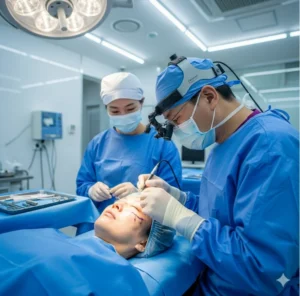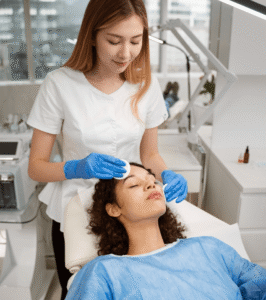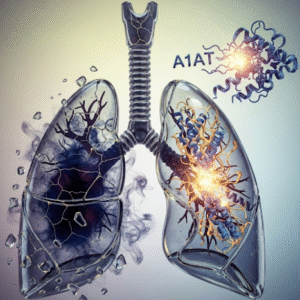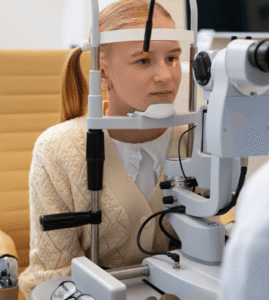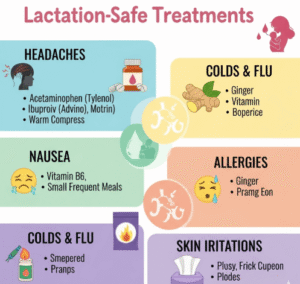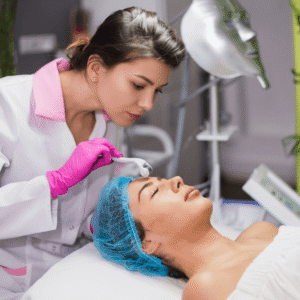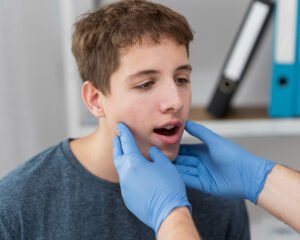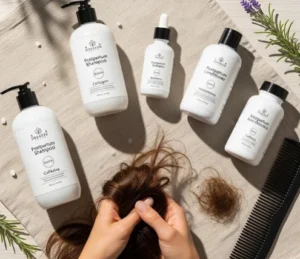What it is
Foot peel callus care in Korea is a dermatological and cosmetic treatment program designed to remove thickened calluses, rough skin, and dead cell buildup on the feet.
Calluses form from friction, pressure, ill-fitting shoes, or prolonged standing, leading to hardened, yellowish, or cracked skin—especially on the heels, balls of the feet, and toes.
→ In Korea, foot peel callus care combines chemical exfoliation, mechanical removal, hydration therapy, and medical foot care for smooth, healthy feet.
• Treatments are available at dermatology clinics, podiatry centers, medical spas, and beauty clinics.
• Korean callus care emphasizes both aesthetic appearance and functional comfort.
Why it’s done
Patients in Korea seek foot peel callus care for:
→ Smoothness → To remove rough patches and restore soft feet.
→ Comfort → Calluses can cause pain when walking or wearing shoes.
→ Crack prevention → Reduces risk of heel fissures and infections.
→ Aesthetic care → Smooth, even-toned feet align with Korean self-care culture.
→ Confidence → Helps patients feel more comfortable wearing sandals or barefoot.
Alternatives
Some non-clinical alternatives include:
• Over-the-counter foot peel masks → Chemical exfoliants (AHA, BHA) that cause skin to shed gradually.
• Pumice stones or foot files → Manual exfoliation for mild calluses.
• Moisturizing creams → Urea or lactic acid lotions for daily softening.
• Soaks → Warm water with Epsom salt or vinegar for softening calluses.
→ While effective for mild cases, professional Korean treatments provide deeper, safer, and longer-lasting results.
Preparation
Before undergoing foot peel callus care in Korea, preparation involves:
- Foot evaluation → Dermatologist or podiatrist examines the thickness and location of calluses.
- Medical history → Screening for diabetes or circulatory problems (important for foot healing).
- Pre-care hygiene → Feet should be clean, with nail polish removed.
- Lifestyle discussion → Shoe habits and daily routines reviewed to address root causes.
→ Korean clinics often recommend moisturizing routines prior to peels for better results.
How it’s done
Foot peel callus treatments in Korea may include several steps:
- Cleansing and soaking
- Warm water or herbal soaks to soften the skin.
- Chemical peeling
- Application of glycolic acid, lactic acid, salicylic acid, or urea-based solutions.
- Softens and dissolves dead skin layers over 1–2 weeks.
- Mechanical removal
- Gentle filing, microdermabrasion, or podiatric debridement to smooth thick calluses.
- Moisturizing treatment
- Rich creams or foot masks with shea butter, hyaluronic acid, or centella asiatica.
- Optional add-ons
- LED light therapy for healing.
- Whitening serums for darkened callus areas.
→ A session lasts 30–60 minutes.
→ Programs often include 3–4 treatments spaced 2–4 weeks apart.
Recovery
Recovery from foot peel callus care is minimal:
• After chemical peels → Peeling and shedding start in 3–5 days and continue for up to 2 weeks.
• After mechanical removal → Immediate softness, with mild sensitivity for 1–2 days.
• Moisturizing required → Daily application of hydrating creams.
• Lifestyle care → Patients are advised to wear comfortable shoes and avoid friction.
→ Results include smoother, brighter, and softer feet within 1–2 weeks.
Complication
Although generally safe, risks include:
- Over-exfoliation → Can cause sensitivity or rawness.
- Infection → Rare, if deep cracks are not treated properly.
- Hyperpigmentation → Possible if sun-exposed without protection post-treatment.
- Recurrence → Calluses may return if footwear or habits are not corrected.
→ Korean specialists minimize risks by using gentle, controlled treatments.
Treatment option in Korea
Korea offers advanced foot peel and callus care programs:
→ Dermatology and podiatry clinics → Provide medical-grade callus removal with safety protocols.
→ Cosmetic centers → Offer chemical peels combined with spa-like hydration treatments.
• Innovative formulas → Korean foot peels often include AHA blends with soothing botanicals to minimize irritation.
• Holistic approach → Clinics address both appearance and function, often guiding patients on proper footwear and skincare.
• Medical tourism → Many visitors choose Korea for safe, professional callus care compared to at-home peels.
→ With its precision treatments, soothing aftercare, and holistic foot health approach, foot peel callus care in Korea ensures soft, smooth, and comfortable feet.

